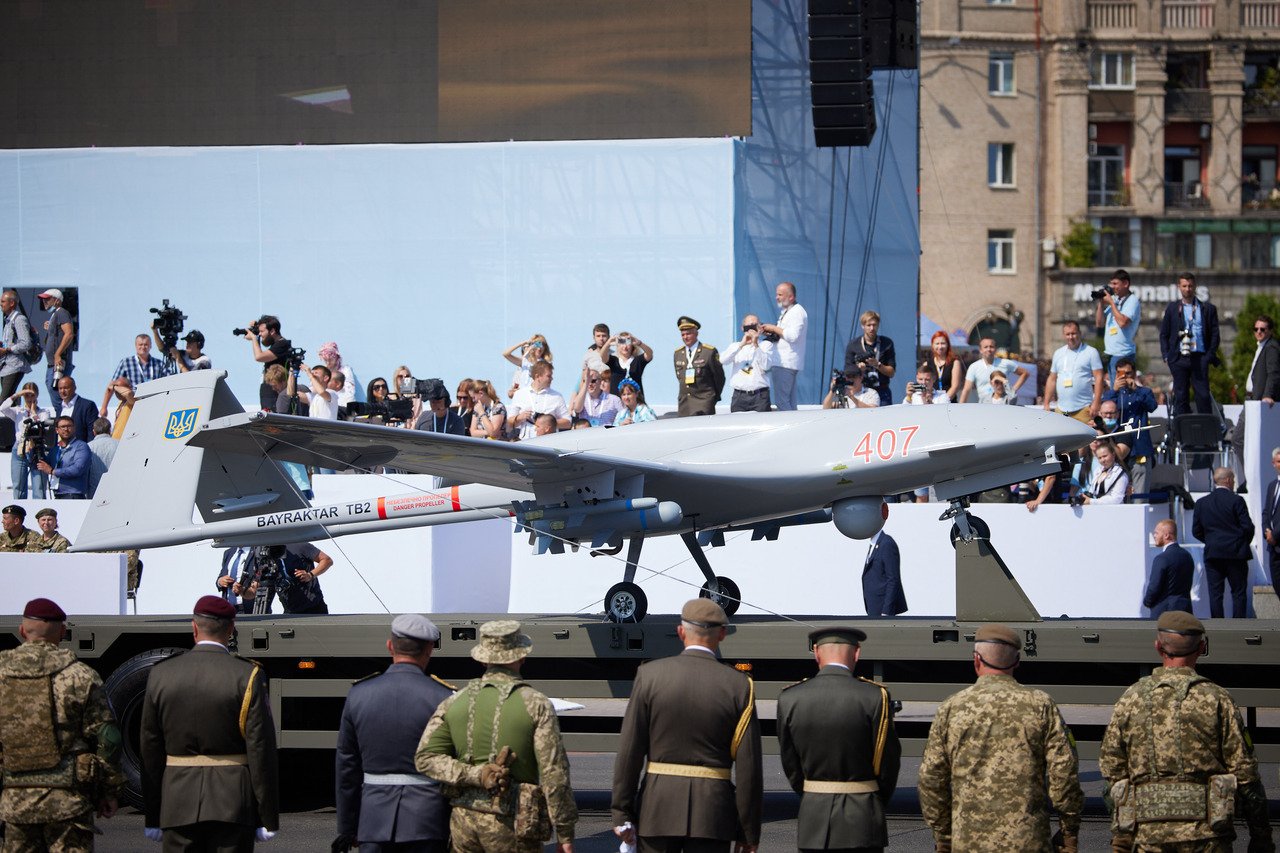
Turkey’s Bayraktar TB2 Drone is a Sky Demon
If there is one untold, or completely misunderstood, geopolitical story of the twenty-first century, it is the rise of Turkey as a great power. Possessed of an Islamist political ideology and a commitment to restoring Turkey’s long-dead Ottoman Empire, the country that sits at the “Crossroads of Civilization,” between Europe, the Middle East, and Central Asia, is the only great power that has seen its political power and military strength enhance since the dawn of this century.
One area where Turkey is showcasing its newfound power and potency is in the realm of indigenous weapons. Turkey is a global leader in drone technology and its Bayraktar TB2 Medium Altitude Long Endurance (MALE) unmanned combat aerial vehicle (UCAV) is a perfect exemplar of Turkey’s military technological prowess. The TB2 is known for having reshaped the dynamics of contemporary warfare with its affordability, effectiveness, and adaptability.
The History of TB2 Drones
Built by Baykar Makina, a Turkish defense contractor for the Turkish Air Force, the Bayraktar TB2 has become a massively popular system both in Turkey’s Armed Forces and as an export model. It has enjoyed extensive service with the Ukrainian Armed Forces as they war against their neighbor, Russia, for control over the eastern portion of Ukraine and the Crimean Peninsula (both of which Russia views as its own).
A common theme of Turkey’s development as a major military technological power is that Ankara is consistently denied access to key American and NATO military assets. And because Turkey is prevented from gaining access to advanced Western technologies, Ankara has endeavored to become militarily self-sufficient. That is precisely what has occurred over the last decade.
So, again, after the Americans embargoed Turkey from purchasing armed drones (because the West did not want those systems being used by Turkey against U.S.-backed Kurdish fighters in the Middle East), Turkey’s domestic drone industry was catalyzed into action. The TB2 made its initial flight in August 2014. By 2021, the drone had logged over 400,000 flight hours globally.
The Specs
Turkey equipped the TB2 with advanced systems allowing for both autonomous and remotely controlled operations. Constructed predominantly of carbon fiber and Kevlar, this V-tail-signature craft has proven itself time and time again over the last decade, meaning that Turkey has become an unmanned aerial vehicle-producing superpower. The TB2 carries a payload of up to 330 pounds.
TB2s integrate electro-optical, infrared cameras, and laser designators (and laser range finders), making these birds a perfect ISR (intelligence, surveillance, and reconnaissance) craft as well as effective for targeted strikes.
It has an operational altitude of 25,000 feet and an endurance of 27 hours, meaning that the TB2 can remain over targets for a protracted time, augmenting the user’s real-time battlefield information flow (granting greater situational awareness upon the force deploying the TB2).
Over the years, TB2s have participated in conflicts in Syria and Iraq. They were used to neutralize enemy air defenses on behalf of Turkish-backed elements fighting in war-torn Libya. In the brutal Nagorno-Karabakh war, Turkey’s ally Azerbaijan deployed TB2 drones so well that many believe these systems led to Armenia’s defeat in that conflict.
A Powerful Export Model
As noted above, though, the TB2 drones became most well-known internationally for their use by Ukrainian forces against the invading Russians, giving the TB2 positive press.
In all the conflicts these drones have fought, they have performed brilliantly, making them a key system that Turkey produces. What’s more, the relatively cheap price of individual TB2s (around $5 million), makes these drones an attractive purchase for nations operating under constrained defense budgets.
Nearly twenty-four foreign nations have purchased these drones from Turkey, boosting Turkey’s arms industry as well as Turkey’s national influence and prestige.
Thanks to the unqualified success of the TB2 program, Turkey has invested in a new round of systems augmenting the capabilities of the TB2. For instance, the even more advanced Bayraktar TB3 has been developed as well as the Akinci, promising greater strike and surveillance capabilities—at affordable rates—than what the legendary TB2 provided.
Turkey has arrived as a great regional power and its indigenous arms industry proves this. It is now only a matter of time before Turkey exerts its power beyond its present borders. Indeed, it has already started enhancing its power in the Middle East. The Bayraktar TB2 (and subsequent drone systems) are but a few of the symbols proving Turkey’s return to greatness.
Brandon J. Weichert, a Senior National Security Editor at The National Interest as well as a Senior Fellow at the Center for the National Interest, and a contributor at Popular Mechanics, consults regularly with various government institutions and private organizations on geopolitical issues. Weichert’s writings have appeared in multiple publications, including the Washington Times, National Review, The American Spectator, MSN, the Asia Times, and countless others. His books include Winning Space: How America Remains a Superpower, Biohacked: China’s Race to Control Life, and The Shadow War: Iran’s Quest for Supremacy. His newest book, A Disaster of Our Own Making: How the West Lost Ukraine is available for purchase wherever books are sold. He can be followed via Twitter @WeTheBrandon.
Image: Flickr.


